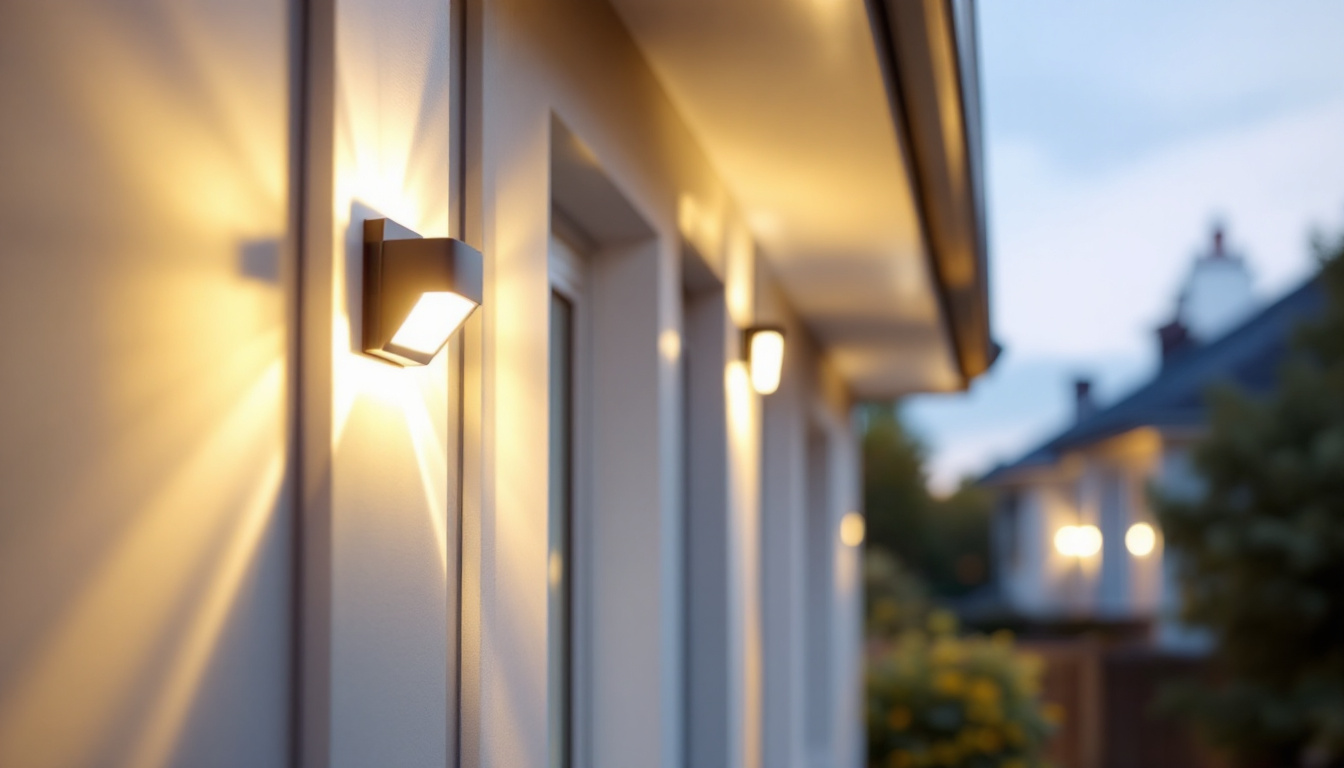
garage ceiling lamps play a pivotal role in ensuring that these spaces are well-lit, functional, and safe. For lighting contractors, understanding the nuances of garage lighting can significantly enhance project outcomes and client satisfaction. This article delves into essential insights that can help contractors make informed decisions when it comes to selecting and installing garage ceiling lamps.
Before selecting the appropriate lighting fixtures, it is crucial to understand the specific needs of garage spaces. Garages are often multi-functional areas used for parking vehicles, storing tools, and sometimes even as workshops. Each of these activities requires different lighting considerations.
When assessing the lighting needs of a garage, consider its primary functions. A garage primarily used for parking may not require the same intensity of light as one that serves as a workshop. For instance, a well-lit workspace is essential for tasks like repairing vehicles or completing DIY projects, where precision is key.
Moreover, versatility is vital. Many homeowners use their garages for various purposes, so installing adjustable lighting options can provide the flexibility needed for different tasks. Dimmable fixtures or multi-directional lights can help achieve this versatility. Additionally, incorporating LED strip lights along shelves or workbenches can offer targeted illumination, making it easier to locate tools or materials without overwhelming the entire space with bright light.
Safety is paramount in any garage setting. Poor lighting can lead to accidents, especially in areas where tools and vehicles are present. adequate illumination helps prevent trips and falls, making it essential for contractors to recommend fixtures that provide ample light coverage.
In addition to brightness, consider the placement of fixtures to eliminate shadows and dark corners. Utilizing a combination of overhead lights and task lighting can enhance safety and functionality. Furthermore, integrating motion sensor lights can be an excellent addition, as they automatically illuminate the space when someone enters, ensuring that you never have to fumble in the dark. This feature not only boosts safety but also adds convenience, especially when your hands are full or when you’re carrying items in and out of the garage.
Another important aspect of safety in garage lighting is the use of fixtures that are rated for damp or wet conditions, particularly if your garage is attached to your home or is prone to moisture. Choosing the right type of bulbs, such as those with a higher color rendering index (CRI), can also help in accurately assessing colors and details, which is crucial when working on intricate projects or repairs. By addressing these factors, you can create a well-lit environment that enhances both safety and productivity in your garage space.
There is a wide variety of ceiling lamps available for garages, each with its unique benefits and characteristics. Understanding these options can help contractors make the best choices for their clients.
Fluorescent lights have long been a popular choice for garages due to their energy efficiency and bright output. They provide a cool, white light that helps illuminate large areas effectively. Additionally, fluorescent bulbs have a longer lifespan compared to traditional incandescent bulbs, making them a cost-effective solution in the long run.
However, it is essential to consider the potential for flickering and color rendering issues, which can affect visibility. Contractors should recommend high-quality fluorescent fixtures to mitigate these concerns. Furthermore, the installation of motion sensors can enhance the functionality of fluorescent lights, ensuring that they turn on only when needed, thus saving energy and extending the life of the bulbs.
LED lights are rapidly becoming the go-to option for garage lighting. They offer numerous advantages, including energy efficiency, longevity, and low heat emission. LED fixtures are available in various styles, from panel lights to high-bay options, making them suitable for different garage sizes and configurations.
Moreover, LED lights have excellent color rendering capabilities, which is crucial for tasks requiring accurate color perception. This feature makes them ideal for garages used as workshops or hobby spaces. Additionally, many LED options come with adjustable brightness settings, allowing users to customize the lighting according to their specific needs, whether for detailed work or general illumination.
While less common in modern installations, incandescent and halogen lamps still have their place in garage lighting. They provide a warm light that some homeowners prefer for aesthetic reasons. However, their energy consumption and shorter lifespan make them less favorable compared to fluorescent and LED options.
Contractors should weigh the benefits and drawbacks of these traditional lighting solutions, especially in terms of energy efficiency and maintenance costs. It’s also worth noting that halogen lamps can produce a brighter light than standard incandescent bulbs, making them suitable for specific tasks that require enhanced visibility. For those who appreciate the nostalgic feel of incandescent lighting, combining them with modern fixtures can create a unique ambiance while still addressing energy concerns.
Proper installation is crucial to maximize the effectiveness of garage ceiling lamps. Lighting contractors should adhere to best practices to ensure optimal performance and safety.
The height at which ceiling lamps are installed can significantly impact their effectiveness. For garages, fixtures should typically be mounted at least 7 to 8 feet above the floor to avoid interference with vehicles and storage. This height also helps to distribute light evenly across the space.
Additionally, strategically placing fixtures can help eliminate shadows. A combination of central overhead lights and wall-mounted fixtures can enhance overall illumination and visibility.
Electrical wiring must be conducted according to local codes and regulations. Contractors should ensure that all fixtures are properly grounded and that circuits can handle the load of the lighting system. Using high-quality wiring and components can prevent future issues and ensure safety.
It is also advisable to incorporate switches that are easily accessible. Consider using motion sensors or timers to enhance energy efficiency and convenience for homeowners.
As energy costs continue to rise, homeowners are increasingly interested in energy-efficient lighting solutions. Lighting contractors can play a significant role in promoting sustainable practices through their recommendations.
When selecting fixtures, contractors should prioritize energy-efficient options such as LED lights. These fixtures consume significantly less power than traditional incandescent or halogen lamps, resulting in lower electricity bills and a reduced carbon footprint.
Additionally, educating clients about the benefits of energy-efficient lighting can lead to more informed purchasing decisions. Highlighting the long-term savings associated with LED lighting can be a persuasive selling point.
The integration of smart technology in lighting systems is gaining popularity. Smart lighting solutions allow homeowners to control their garage lights remotely, set schedules, and even adjust brightness levels. This not only enhances convenience but also contributes to energy savings.
Contractors should stay informed about the latest smart lighting products and technologies to provide clients with cutting-edge solutions that meet their needs.
Lighting contractors may encounter various challenges when working with garage ceiling lamps. Understanding these issues and their solutions can streamline the installation process and improve client satisfaction.
Garages with low ceilings can pose a challenge when it comes to selecting appropriate lighting fixtures. Low-profile ceiling lamps or flush mounts can provide adequate illumination without taking up valuable vertical space.
Another solution is to use wall-mounted fixtures that direct light downward, effectively illuminating the area while maintaining a clean aesthetic. Contractors should carefully assess the space and recommend fixtures that maximize light output without sacrificing headroom.
Uneven light distribution can lead to dark spots and shadows in a garage. To combat this issue, contractors should consider using multiple light sources strategically placed throughout the space. Combining overhead fixtures with task lighting can create a well-lit environment.
Additionally, using reflectors or light-colored walls can help enhance light distribution and minimize shadows. Educating clients on the importance of proper light placement can lead to more effective installations.
Effective communication with clients is essential for lighting contractors. Educating homeowners about their lighting options and the benefits of different fixtures can lead to better decision-making and increased satisfaction.
When discussing lighting options, contractors should provide clear, concise recommendations based on the specific needs of the garage. This includes explaining the advantages and disadvantages of various fixtures, as well as their energy efficiency and maintenance requirements.
Visual aids, such as diagrams or product samples, can help clients better understand the proposed solutions. Taking the time to address their questions and concerns can foster trust and confidence in the contractor’s expertise.
After the installation is complete, offering follow-up support can enhance the client experience. Providing maintenance tips, such as how to clean fixtures and when to replace bulbs, can help clients maintain their lighting systems effectively.
Encouraging clients to reach out with any issues or questions can also strengthen the contractor-client relationship. This ongoing communication can lead to repeat business and referrals in the future.
Garage ceiling lamps are more than just functional fixtures; they play a crucial role in enhancing safety, visibility, and usability in these multi-purpose spaces. For lighting contractors, understanding the various types of lighting, installation best practices, and energy-efficient solutions is essential for delivering high-quality service.
By staying informed about the latest trends and technologies, contractors can provide clients with tailored recommendations that meet their unique needs. Ultimately, effective communication and education will lead to successful installations and satisfied homeowners.
Ready to elevate your lighting installations with premium garage ceiling lamps that combine quality, affordability, and convenience? Look no further than LumenWholesale. Our spec-grade lighting products are designed to meet the highest industry standards, ensuring your projects shine with reliability and performance. Say goodbye to inflated markups and hello to unbeatable wholesale prices, complemented by the ease of bulk buying and free shipping. Don’t compromise on your lighting needs—choose LumenWholesale for the best value in Wholesale Lighting at the Best Value. Your clients will notice the difference, and so will your bottom line.

Discover expert tips and insights on optimizing LED light brightness for various projects.

Discover the art of mastering scone lighting with expert tips and strategies tailored for lighting contractors.

Discover how motion sensor outdoor lighting is revolutionizing the work of lighting contractors.

Discover how Black Friday has become a pivotal event for the lighting industry, offering unprecedented deals and shaping consumer trends.